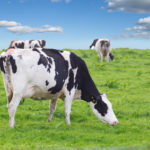Which one should you use?
 Pasteurization in the US was instituted in the 1930’s. Ever since then, we have been kept “safe” from harmful pathogens said to be found in milk, but many argue that it also destroys the wonderful nutritional value of milk. It is interesting that many European countries continue to sell non-pasteurized milk without any issues. And really the answer is simple when you use common sense:
Pasteurization in the US was instituted in the 1930’s. Ever since then, we have been kept “safe” from harmful pathogens said to be found in milk, but many argue that it also destroys the wonderful nutritional value of milk. It is interesting that many European countries continue to sell non-pasteurized milk without any issues. And really the answer is simple when you use common sense:
Let’s say farmer A keeps his large herd of cows in crammed cages, loading them up with synthetic hormones, GMO feed and antibiotics to keep them “healthy”.
 Farmer B, on the other hand, raises his small herd with plenty of pasture grazing and occasionally substitutes with non-GMO, organic feed or they may even be 100% grass-fed.
Farmer B, on the other hand, raises his small herd with plenty of pasture grazing and occasionally substitutes with non-GMO, organic feed or they may even be 100% grass-fed.
Which milk do you suppose has a higher nutritional value? This is a rhetorical question.
A word about taste: This is a subjective topic, but as a drinker of raw milk from cows and goats for the last 10 years, I can tell you that raw is far superior. It is creamier and tastes milder. Also, I never had any issues with the milk. In fact, my digestive systems seems healthier than it has been before raw dairy. I also consume raw yoghurt and kefir, which are an awesome base for smoothies.
If you want to switch to raw dairy you can do a search on the internet simply by typing in “raw milk” and see what pops up. There are numerous websites where you can find farmers or food coops in your area providing access to raw dairy. Try eatwild.com, realmilk.com or The Weston A. Price Foundation website.
Kirstin Leal


